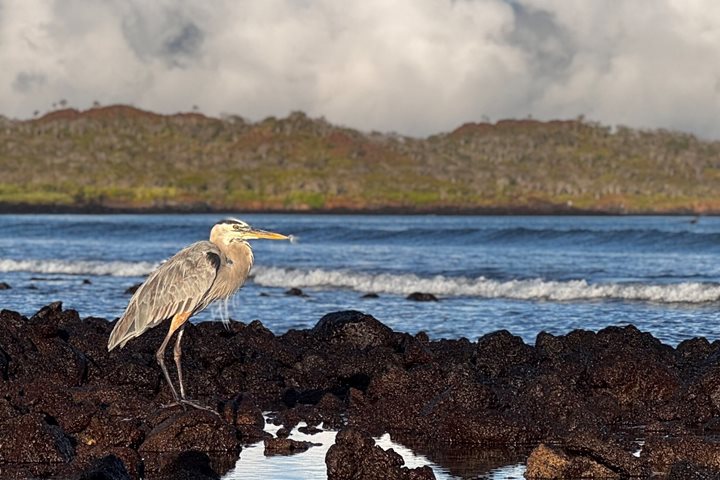After spending our first night in the Galapagos, we started our activities early in the morning by visiting one of the smallest islands, home of a great number of sea birds and land iguanas. Lying just to the north of Baltra, North Seymour is a flat and low island consisting of uplifted sea floor. It was covered with dry vegetation, mainly dwarf Palo Santo trees and sea shore bushes such as salt bush and sesuvium, whose red leaves gave a special contrast with the blue ocean. We walked along the boulders observing dry vegetation everywhere, with magnificent and great frigate birds nesting on their branches, producing their unmistakable calls, making it easy to distinguish one from each other. Land iguanas rested along the boulders, just observing us indifferently while juvenile blue footed boobies walked along the ground, flapping their wings as practice to be ready to fly in a few weeks.
We left behind the forest of Palo Santo to walk along the sandy beach, where we observed many Galapagos sea lions resting in the bushes, which looked like real caves of vegetation, while on the top of them, a great number of juvenile frigate birds were the delight of our guests. After spending the full night in North Seymour, we continued our afternoon activities, sailing northwest to visit a different island a few miles away, known as Rabida Island.
After a couple of hours of navigation, we finally dropped anchor to continue our exploration. At the distance the landscape looked different compared with the previous island. It looked red with high hills covered in green vegetation. The landing beach was covered with sea lions, and our guests enjoyed snorkeling along the red cliffs, observing sea turtles, white tipped reef sharks and Galapagos penguins. The other group, who preferred to walk along the seashore, observing yellow warblers and mockingbirds fluttering along the bushes while in the ocean, pelicans and boobies tried to catch some food in a feeding frenzy.
It was with the last beams of sun when we began to come back to the National Geographic Endeavour, leaving behind beautiful places, tired but happy with the best memories after visiting this unique paradise called Galapagos.







